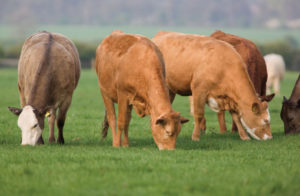Are Cows Losing Condition Earlier?
6 September 2017 Earlier this summer things looked good and, on average, cows were carrying more condition that normal. However in the last few weeks several producers have mentioned that grass growth is slowing. This is particularly apparent in some rotational grazing systems where in some cases stock have had to be removed to allow grass heights to recover.
Earlier this summer things looked good and, on average, cows were carrying more condition that normal. However in the last few weeks several producers have mentioned that grass growth is slowing. This is particularly apparent in some rotational grazing systems where in some cases stock have had to be removed to allow grass heights to recover.
Cows always start to lose condition in the autumn as grass growth and quality falls. If however the decline starts in late July it will affect cow condition later this autumn. For many autumn calving herds this will be beneficial, to help reduce calving difficulties from over fatness. However in spring calving herds, fertility could be affected where bulls are still out with cows in August.
Growing stock will also be adversely affected if grass supplies are restricted. Beginning supplementary/creep feeding earlier and at higher levels will help ensure target sale weights and dates are achieved.
I appreciate and apologise that several articles in recent months talking about over fat cows have been contradictory. However in all cases the critical message is simply – ask your animals how well they are being fed.
Signs to look out for when you check stock are –
- Are your cows carrying less condition that they were a month ago eg are there fewer of them with patchy fat around their tailhead?
- Have spring born calves lost their bloom and beginning to look like store cattle?
- Are stock “hollow” in the triangle behind their ribs? If so this is an indication their rumens are not full. However if the triangle isn’t hollow it could mean they are full of low D value headed grass which they are being forced to eat and will still not be performing well.
- Look at how much grass is available. A good guide is that the top of the sward should be above the first 2 digits of your middle finger when you place the tip on the ground. At or below this grass height cattle will have reduced intakes due to the difficulty of harvesting sufficient grass. Ideally it needs to be between where you fingers join your palm and where your thumb joins your palm.
- Check the quality of what they are eating. Pluck a handful of grass and see how much is green leaf, green headed stem or dead stem. Consider dead stem and half the green stem to have the same feed value as straw and the rest to be an average quality silage to guess how well stock would perform. For example a 50:50 mix would have an ME of around 8 which for most stock would only just cover maintenance.
Basil Lowman, basil.lowman@sac.co.uk
Sign up to the FAS newsletter
Receive updates on news, events and publications from Scotland’s Farm Advisory Service
